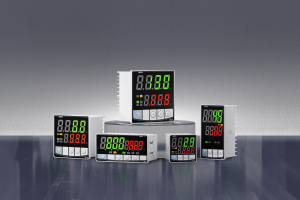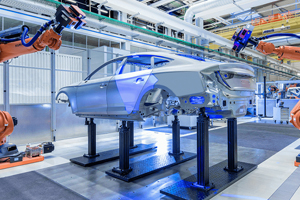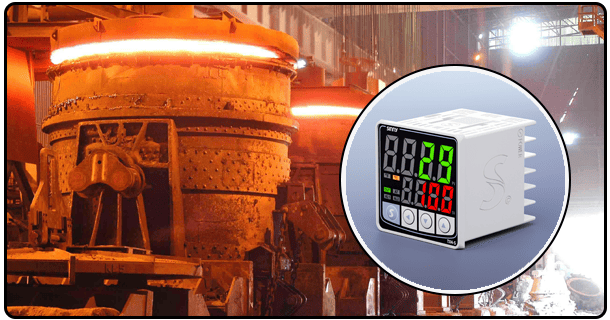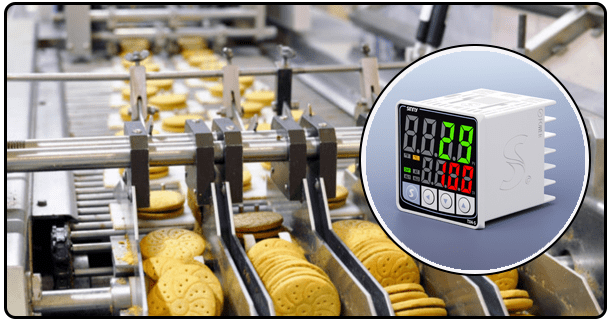How to implement a simple PID temperature controller
1.Precision temperature regulation is a requirement for a wide range of applications.
From sensitive lab experiments requiring microkelvin stability, to robust industrial processes that require stringent tolerances, and complex environments involving 3D printing that demand consistent material properties. To achieve and maintain a precise temperature profile, a sophisticated strategy is required. Among the most effective methodologies available, the PID (Proportional-Integral-Derivative) control algorithm stands out as a foundational technique. The mathematical method, which is designed to minimize the difference between the desired setpoint value and the process variable's actual value, is the foundation of most temperature control systems. Typically, a PID temperature controller relies on dedicated hardware, often a microprocessor-contained unit, to execute the algorithm and manage the control loop in real-time. A more flexible and accessible alternative is to implement the PID logic in software running on general purpose computers, dedicated microcontrollers, or hardware designed specifically for computing tasks. Software-based control functions are managed by leveraging the computing power and flexibility that software offers. The PID algorithm is executed on a processor unit that interfaces with the temperature sensors and actuators via digital communication. Software-based PID controls are crucial to engineers, researchers, hobbyists and others who want sophisticated and adaptable temperature automation. This guide explores the basic aspects of implementing a simple PID system.
2. Understanding PID Core Components in Simple Terms
The success of a simple PID system is dependent on the synergy between the components, and the logic in the software that executes the algorithm. First, there is the processing module, which acts as the "brain" of the system. This unit performs the PID calculations. In such systems, microcontrollers are often used, as they offer a good balance of computational power, input/output capability, and cost effectiveness. Platforms like Arduino, Raspberry pi, and ESP32 are popular platforms for implementing PID controls. They're especially suitable for projects that have limited processing requirements or require ease of programing. They may be limited in speed and complexity when compared with more powerful options. A general-purpose PC, or server can provide higher performance. These systems are often used with software environments such as MATLAB/Simulink (leveraging scipy, pycontrol), C++ or graphical platforms, like LabVIEW. They are often equipped with powerful simulation tools and sophisticated visualizations, which makes them ideal for complex systems, high-throughput data processing, or research. It is also important to note that many modern Programmable Logic Controllers or Distributed Control Systems have robust software platforms which allow the implementation and tweaking of PID algorithm. This represents another aspect of software-based hardware enabled control. Modern software-based systems with PID often include communication and network capabilities, even though they are not required for the basic controls. It allows remote temperature monitoring, tuning of parameters or setpoints, as well as logging temperature data. The use of interfaces like Ethernet to connect to a network or Wi-Fi to allow users to interact from afar, such as USB to directly connect to the computer or Ethernet to connect to a local area network. These connections enhance the utility and practicality of software-based systems, especially in scenarios such as research, industrial monitoring or distributed control.
Second, the interface is critical between the software program and temperature sensor. It is important to choose the right sensor for each application. This will determine the range, accuracy and response properties required. The most common sensor types are thermocouples, such as the Types J, K, T or E (valued for their large operating ranges, and their relatively simple construction), resistance temperature detectors (RTDs), like the Pt100 and Pt1000, (known for accuracy, stability and high stability), and thermistors, which can be used for specific temperatures ranges, and offer high sensitivity. Software must be developed to interpret correctly the signals generated by the sensor. When using analog sensors such as thermocouples and RTDs in conjunction with a computer or microcontroller, an Analog to Digital Converter (ADC), is usually required. ADCs convert the continuous voltage and current signals from sensors into discrete values that can be processed by software. ADC resolution (e.g. 10-bits, 12-bits, 16-bits) and sampling rate are what determine how precise the temperature measurement can be. Alternatively, sensors with a digital output that is a code directly (e.g. DS18B20 sensors on 1-Wire) can simplify the interface because the software will be able to read it. Signal conditioning may be necessary in all situations, for example, to amplify a low-level sensor signal, or remove noise prior to digitization.
Thirdly, the interface for controlling actuators is essential. It is necessary to translate the software's output control, often in the form of a pulse width modulation (PWM), into an actual command for temperature regulation. Microcontrollers or computers that generate digital signals can use a Digital to Analog Converter (DAC), which creates an analog voltage suitable for devices such as Solid State Relays for switching AC/DC electricity, linear analog heating elements. Mechanical relays can be worn out by mechanical switches. SSRs have a faster switching time and are less likely to wear. The software could also control an optocoupled relay connected to a high-power relay that can switch the power to the heaters or coolers. Direct control using General Purpose input/output (GPIO), pins, and transistors like MOSFETs may be used for very small loads. Software logic should include all necessary steps for converting the PID signal into the correct control signal to be used by the selected actuator. This will ensure that the actuator is responding correctly to commands from the software.
Modern software-based systems with PIDs often include communication and network capabilities, even though they are not strictly required for basic control. It allows remote temperature monitoring, tuning of parameters or setpoints, as well as logging temperature data. The use of interfaces like USB to connect directly to the computer, Ethernet to connect to a network or wireless protocols such as Wi-Fi and Bluetooth to facilitate interaction with users from afar or to integrate into larger control systems is possible. These connections enhance the utility and practicality of software-based systems, especially in scenarios such as research, industrial monitoring or distributed control.
3. Selecting Components for Simplicity
Software-based PID systems are only as good as their implementation. The underlying logic of the equation is simple, even though it may appear complex. This is the standard discrete time PID This includes measurement, calculations, output, and calculation. As a concept of continuous time, the PID algorithm must be modified for digital implementation. Discreteization is the process of adaptation. Software must sample system data at intervals that are regular (the sampling period, Ts). PID operates then on discrete samples. Euler's Method is one of the simple methods. Software loops are fundamental for implementation. The controller typically executes a repeating loop at a predetermined sampling rate. In this loop, software calculates error, reads sensor values, generates control signals, then computes PID output. The loop needs to be fast enough for the control actions in real time, which is critical for stable operations.
For the PID software to work correctly, it requires that a set of parameters be tuned: The Proportional (Kp), Ki, and Kd. The correct value selection is crucial to achieving the desired performance. The tuning procedure involves choosing the appropriate Kp, Kd, and Ki values. The tuning process involves manually adjusting each gain parameter in sequence, watching the response of the system, and then making small changes. Usually, the proportional gain (Kp), is adjusted first. Increase the Kp gradually until you get a system that responds rapidly but not with significant oscillation. The aim is to get a good response time, or an acceptable overshoot. After P has been set, an Integral term is added (Ki). Starting with Ki = 0, or a low value, increase slowly until any error in the steady state is eliminated (the difference between measurement and setpoint temperature stops changing). Increase Ki slowly, because too much increase can make the system oscillate. The Derivative (Kd), is then added. Begin with a low Kd (often initially zero) value and then make small adjustments. It is intended to reduce any oscillations caused by P or I. Increased Kd can help predict and smooth out changes, but it may also cause the system to slow down or become unstable. Tuning is not always straightforward.
Tuning is not always easy and requires careful monitoring and repeated iterations. Even small changes in parameters can have a significant impact on the behaviour of the system. Overshoot, oscillation and slow response are all common issues. To achieve a system that is well-tuned, it's important to be patient and experiment carefully.
Tuning is not always easy and requires constant observation. Even small changes in parameters can have a significant impact on the behaviour of the system. Overshoot, oscillation and slow response are all common issues. To achieve a system which responds rapidly, is stable and requires constant observation, patience and experimentation is essential. Even small changes in the parameters will have a significant impact on the behaviour of the system. Overshoot, oscillation and slow response are all common issues. To achieve an optimally tuned system, patience and experimentation is essential.
Tuning is not always easy and requires careful monitoring and repeated iterations. Even small changes in the parameters will have a significant impact on the behaviour of the system. Overshoot, oscillation and slow response are all common issues. Safety Websites (e.g. Electrical Safety Authorities), provide guidance. Referencing**hardware datasheets to specific connections. Referencing Hardware datasheets to specific details. Consult Websites on PID Tuning Methods.
- Understand Precise Thermal Regulating with Small PID Temperature Controls
- How to implement a software-based PID temperature controller























